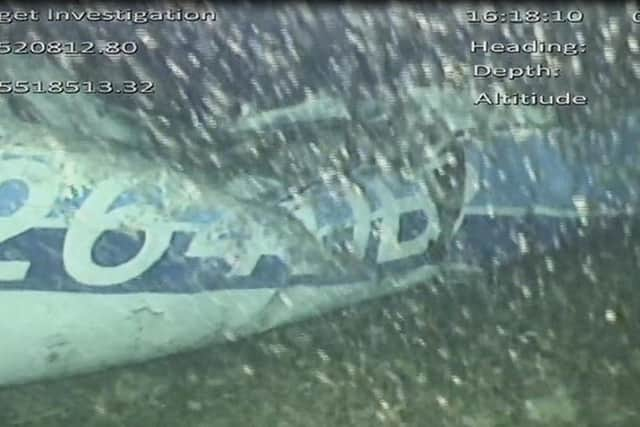Emiliano Sala 'exposed' to carbon monoxide in fatal plane crash


Tests on the 28-year-old striker's body found enough evidence of the harmful gas to cause a heart attack, seizure or unconsciousness, an interim report by the Air Accidents Investigation Branch (AAIB) said.
It is likely that pilot David Ibbotson was also "affected to some extent" by exposure to carbon monoxide, the document added.


Advertisement
Hide AdAdvertisement
Hide AdThe AAIB said the gas can "reduce or inhibit a pilot's ability to fly an aircraft depending on the level of that exposure".
Argentinian footballer Sala signed for Cardiff City from French club Nantes for £15 million on 18 January.
Mr Ibbotson, 59, of Crowle, Lincolnshire flew Sala from Cardiff to Nantes in a Piper Malibu aircraft the following day.
The return flight, which crashed in the Channel, was on 21 January.
Advertisement
Hide AdAdvertisement
Hide AdSala's body was recovered after being spotted inside the downed aircraft at the bottom of the English Channel.
However, Mr Ibbotson has not been located.
The aircraft remains underwater off the coast of Guernsey after an attempt to recover it was hampered by bad weather.
The AAIB said it was working with the aircraft and engine manufacturers and the National Transportation Safety Board in the US "to identify possible pathways through which CO might enter the cabin of this type of aircraft.
"Work is also continuing to investigate pertinent operational, technical, organisational and human factors which might have contributed to the accident," the branch said.
Advertisement
Hide AdAdvertisement
Hide AdDaniel Machover, of Hickman and Rose solicitors, lawyers for Sala's relatives, said the presence of carbon monoxide "raises many questions for the family".
He went on: "The family believe that a detailed technical examination of the plane is necessary.
"The family and the public need to know how the carbon monoxide was able to enter the cabin. Future air safety rests on knowing as much as possible on this issue.
"Emiliano's family call on the AAIB to salvage the wreckage of the plane without further delay."
Advertisement
Hide AdAdvertisement
Hide AdA spokesman for Cardiff City said: "CCFC is concerned at the AAIB's latest report which once again highlights that the aircraft used for Emiliano Sala was not appropriate.
"We continue to believe that those who were instrumental in arranging its usage are held to account for this tragedy."
Piston engine aircraft such as the Piper Malibu involved in the crash produce high levels of carbon monoxide, the interim report said.
The gas is normally conveyed away from the aircraft through the exhaust system, but poor sealing or leaks into the heating and ventilation system can enable it to enter the cabin.
Advertisement
Hide AdAdvertisement
Hide AdSeveral devices are available to alert pilots over the presence of carbon monoxide.
The AAIB said they are not mandatory, but can "alert pilots or passengers to a potentially deadly threat".
Investigators have previously said the validity of Mr Ibbotson's licence will form a key part of their inquiry.
The type of licence he held meant he could only fly passengers in the European Union on a cost-sharing basis, rather than for commercial flights.
Advertisement
Hide AdAdvertisement
Hide AdA full accident report is expected to be published next year.
Responding to calls that the wreckage should be salvaged, an AAIB spokesman said: "The reasons for our decision not to recover the aircraft wreckage have been explained in detail to both families concerned.
"In February our underwater search operation successfully located the wreckage, recovered the passenger's body and captured substantial video evidence from the scene using a remotely-operated vehicle.
"It was not possible at the time to recover the wreckage.
"We have carefully considered the feasibility and merits of returning to attempt to recover the wreckage.
Advertisement
Hide AdAdvertisement
Hide Ad"In this case, we consider that it will not add significantly to the investigation and we will identify the correct safety issues through other means.
"In making our decision, we took into account the high cost of underwater recovery, the evidence we collected in February and the risk that, after a violent impact with the sea, the wreckage would not yield definitive evidence."
Last week Sherry Bray, 48, and Christopher Ashford, 62, were told they are facing jail for accessing CCTV footage of the post-mortem examination of Sala.
